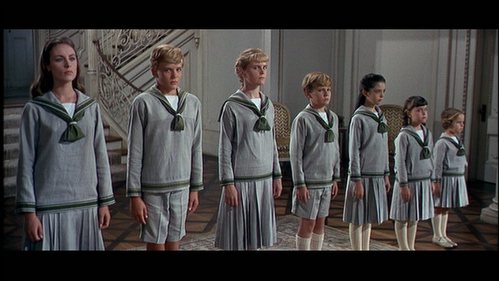by Eleanor Barber
The birth order theory is the theory that your
characteristics can be somewhat controlled by the order you were born in or the
fact that you were an only child. The birth order is based on how much
attention or privileges the average child gets. However some factors may cause
the birth order theory to change.
The oldest child often has characteristics like being
ambitious, responsible, diligent, cautious, controlling and have natural
leadership skills. This often true because the oldest child has the most rules
and often takes on the role of being a role model and looking after their
younger siblings. However many parents set higher expectations of the oldest child, which could either
result in the child becoming very ambitious or feeling like they can do it at
all and veering off in the opposite direction.
The middle child often has characteristics like being a
social butterfly, a peace-keeper, sometimes rebellious and being obsessed with fairness. This often true as the middle child does not
have the rights of the oldest child nor the privileges and lack of rules of the
youngest child. However if the oldest child does not "take their
role" then some middle child will rise up to it and take the
characteristics of a first born. The gender of the first and second child can
change the characteristics as well because if the first child is a boy and the
second a girl, the second is the first born girl so could take some of the
qualities of the first born boy. If there is more than one middle child then
the middle children are likely to be completely different as they would not
like to be in the shadow, as a result if there are three middle children the
oldest middle child and the youngest middle child are more likely to be
similar.
The youngest child often has characteristics like being
manipulative, uncomplicated, outgoing, self centred and an attention seeker.
This is usually because many youngest children have little rules, unlike the
oldest child. This may leave them to feeling like they have lots of freedom and
being more spontaneous, unlike older children who often don't like change.
Parents often have more resources and more knowledge about what will and will not
harm the child, like not taking their child to A&E for every cough or fever. However youngest children may resent not
being taken seriously and becoming responsible like the oldest sibling or
social like the middle sibling.
The only child has characteristics like being mature,
perfectionists conscientious and diligent. This is often because they get all
the attention, rules and privileges focused on them by their parents. They will
often strive to get on better with their elders than their peers.
There are many other factors that can cause the lines
between birth order to be blurred. According to the White-Campbell
psychological birth order inventory, only 23% of women asked agreed with their
characteristics and only 15% of men.
Family values are also a factor. If the family have a long
history of having the same profession and the oldest child doesn't live up to
those standards, then the middle or youngest children can often take over if
they have that specific set of skills needed for that certain profession.
If the oldest child is not the tallest, then the power
dynamic between the children can change because although the oldest child has
the most power, the younger and taller children would have some power causing
the power dynamic to change frequently.
If a child has a special talent or disability. This child
would get the help, support and, sometimes in the case of the talented child,
the pressure often associated with the oldest children, no matter of what
previous status of the child. This would change the family dynamic because in
the case of the disability the oldest may have the responsibilities of being
the oldest but none of the rewards so may have some of both middle child and
firstborn characteristics.
"Blended families", if a child has a new
step-sibling unless they are still in infancy [under 5 years old] they will
find it hard to or will not change their characteristics for the new child in
their family. They will often struggle to adapt, trying to knock people of
their pedestals, or will find a completely new place in the family.
Age differences between children can also change the
characteristics. If there are only one to two years difference they may bounce
of each other by doing completely different things. The close born second child
could challenge the oldest for their position. Three to four years apart if
considered the best difference, allowing them to be their own person but still
have the role of the next child. More than five years difference can act as a
reset button, leaving the would be middle child having the characteristics of
the youngest and they would be youngster having the characteristics of the
oldest child. Identical twins have no
rules applying to them as they are so special in a family dynamic. However
fraternal twins will often act as siblings born close together.

Comments
Post a Comment
Comments with names are more likely to be published.